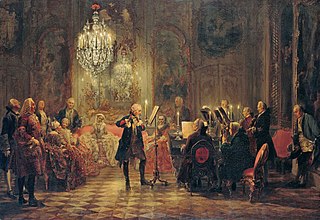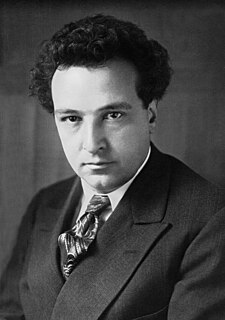
Chamber music is a form of classical music that is composed for a small group of instruments—traditionally a group that could fit in a palace chamber or a large room. Most broadly, it includes any art music that is performed by a small number of performers, with one performer to a part. However, by convention, it usually does not include solo instrument performances.

Isang Yun, also spelled Yun I-sang, was a Korean-born composer who made his later career in West Germany.

Felix August Bernhard Draeseke was a composer of the "New German School" admiring Franz Liszt and Richard Wagner. He wrote compositions in most forms including eight operas and stage works, four symphonies, and much vocal and chamber music.
Alvin Derald Etler was an American composer and oboist.
Gideon Klein was a Czech pianist, classical music composer, and organizer of cultural life at Theresienstadt concentration camp.

Eric Ewazen is an American composer and teacher.

Rolf Liebermann, was a Swiss composer and music administrator. He served as the Artistic Director of the Hamburg State Opera from 1959–1973 and again from 1985–1988. He was also Artistic Director of the Paris Opera from 1973–1980.
Ivan Božičević is a Croatian composer, pianist, organist and jazz musician.
Bernhard Heiden was a German and American composer and music teacher, who studied under and was heavily influenced by Paul Hindemith. Bernhard Heiden, the son of Ernst Levi and Martha (Heiden-Heimer) was originally named Bernhard Levi, but he later changed his name.
Johannes Paul Thilman was a German composer.

Hans von Koessler was a German composer, conductor and music teacher. In Hungary, where he worked for 26 years, he was known as János Koessler.
Jindřich Feld was a Czech composer of classical music.
Viktor Kalabis was a Czech composer.
Waldemar Edler von Baußnern was a German composer and music teacher.
Karl Höller was a German composer of the late Romantic tradition.
Hans Vogt was a German composer and conductor.
Robert Charles Suderburg was an American composer, conductor, and pianist.
Erich Urbanner is an Austrian composer and teacher.
Stojan Stojkov, born 1941 Podaresh, Radovish, is a Macedonian composer and pedagogue. He completed his education on music at Belgrade Music Academy, where he graduated on the Department of Composition. Stojkov is author of numerous works of almost all genres and forms of music. His creative opus includes symphonies, vocal-instrumental, vocal, and staged works, chamber compositions, works for children and other kinds of music creative works.












